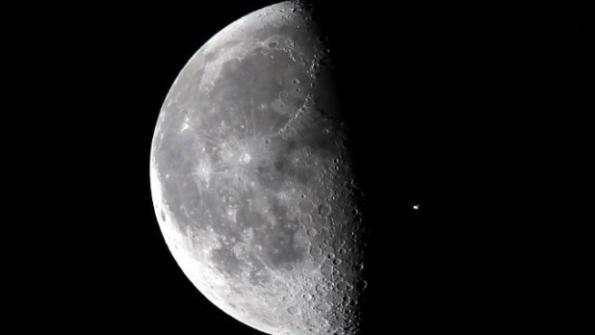
NASA’s long-term strategy for a sustained human exploration of the Moon is to produce scientific, economic and geopolitical dividends as well as establish a sustainable proving ground for longer missions to Mars—and all executed with commercial partners and global alliances.
“The Moon is more than a physical destination,” stresses NASA’s “Plan for a Vibrant Lunar Future,” a 13-page document released late April 2 outlining an exploration road map in response to Vice President Mike Pence’s directive of Aug. 20, 2019.
“A core focus of Artemis is to extend the nation’s geostrategic and economic sphere to encompass the Moon with international partners and private industry,” according to the document’s overview. “Most importantly, the accomplishments of the Moon-to-Mars approach will [ensure] that America remains at the forefront of exploration and discovery.”
Key features of the strategy to follow Artemis 3—the accelerated NASA return to the Moon’s surface with human explorers in 2024 —include an Artemis Base Camp for crews of four astronauts at the potentially resource-rich lunar south pole and lunar-orbiting, human-tended Gateway space station.
The base camp, perhaps at Shackleton Crater, would be equipped with a lunar terrain vehicle for astronaut mobility at the landing zone, a surface habitat and a habitable mobility platform for treks across the lunar terrain lasting up to 45 days. Supporting base infrastructure developed over the long term would include a reusable landing pad, power generation and distribution, radiation shielding, waste disposal and storage facilities.
The Gateway’s initially envisioned role for Artemis 3 is as a command module equipped with power and propulsion, limited habitation and docking ports for commercial lunar landers. That role is still under review, but the document is clear that a Gateway will be assembled and equipped to check out deep-space systems and assess the deep-space environment, including solar and cosmic radiation exposure.
Overseen by NASA’s Mission Control Center, the Gateway is to expand, with potential contributions of a Canadian robot arm, Japanese habitation and resupply capabilities and the European I-Hab habitation module and the European System Providing Refueling Infrastructure and Telecommunications (ESPIRIT) as well as a possible Russian airlock.
As it is enhanced, the Gateway will support longer human stays to simulate portions of a two- to three-year roundtrip to Mars, evaluate life support and other hardware for Mars and in need of risk mitigation, and provide access to previously unexplored regions of the lunar surface.
The document envisions annual missions to the Moon with increasingly longer durations during the Artemis era.
“Whenever the first human mission to Mars occurs, it will not mean that we are done with the Moon,” the plan says. “The windows for launching the two-year mission to Mars open up every few years, and we will continue to conduct human missions to the lunar surface to test systems, conduct scientific investigations, and continue to develop our sustainable lunar presence as we prepare for the optimal launch window.”
Astronauts living and working at the base camp are expected to focus their technology development efforts in six areas, including the mitigation of lunar dust, an irritant to humans and liability to mechanized hardware. The focus includes development of lunar resources, including water ice in permanently shadowed craters and metals, and enhanced solar and nuclear power systems. Lunar explorers will assess how to best access extreme terrains and construct surface assets in a reduced-gravity environment.
As anticipated, resource development could enable the production of water and oxygen, liquid hydrogen and oxygen rocket propellants, all to reduce resupply requirements and costs.
On the science front, Artemis crews would look for signs of how the inner Solar System evolved through clues hidden in the lunar regolith and work with remote robots from the base camp to establish and operate a lunar far side radio telescope for unobstructed observations of deep space.
Robotic hoppers deployed from the base camp could deploy science and technology payloads across the lunar landscape.
The document acknowledges the limitations imposed by budget, launch vehicle availability and technology maturity.
The action begins with the Commercial Lunar Payload Services initiative, a lineup of U.S. commercial companies qualified by NASA to launch robotic lunar landers equipped with science and technology payloads to the south pole starting in 2021.
Those include the Volatiles Investigating Polar Exploration Rover (VIPER), a golf cart-sized robot equipped to roam for several miles and drill into the subsurface to sample the water ice at the first planned landing site on the Moon since the Apollo 17 astronauts departed the mountainous highlands of Taurus-Littrow in December 1972.





